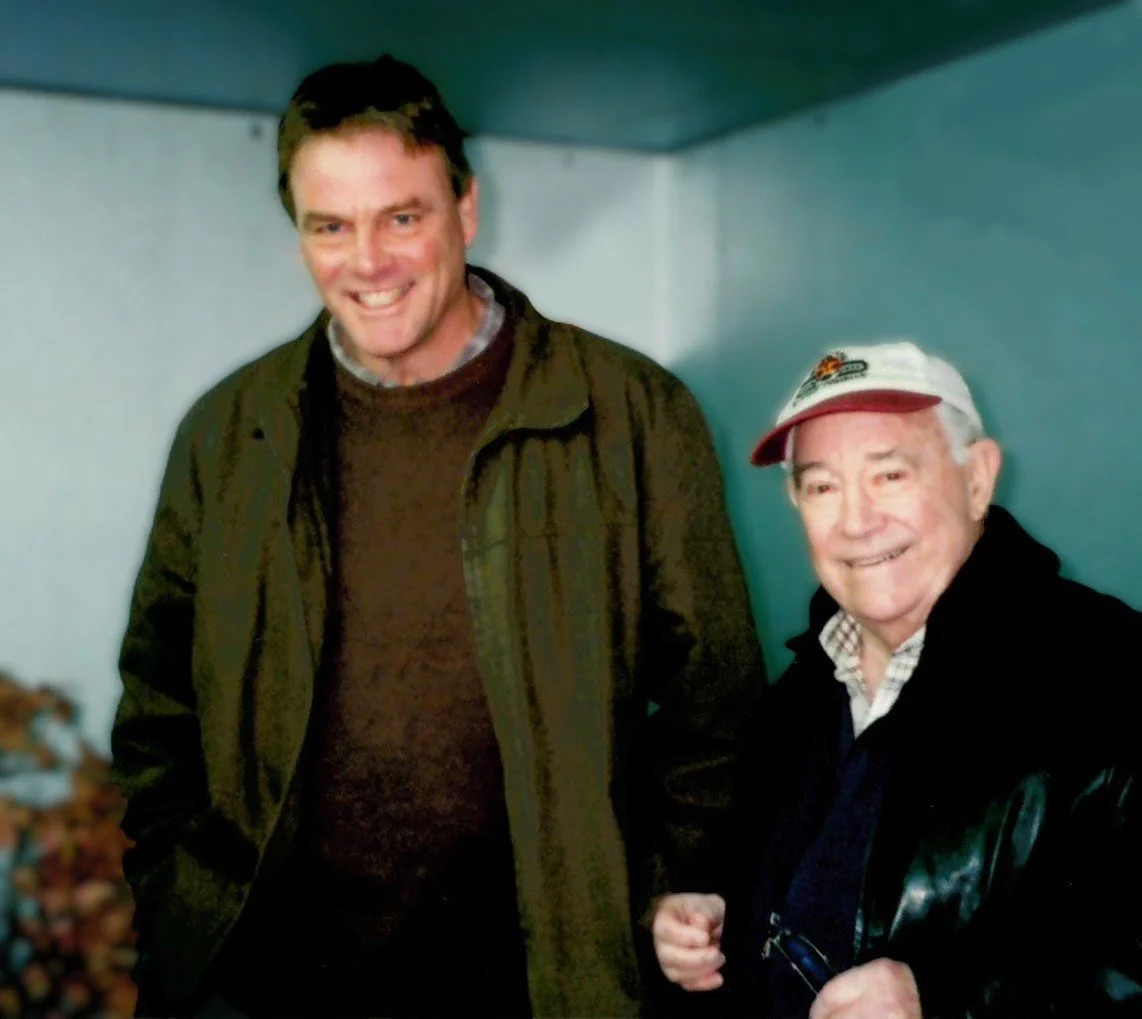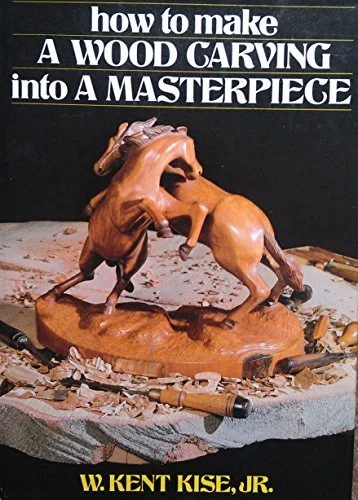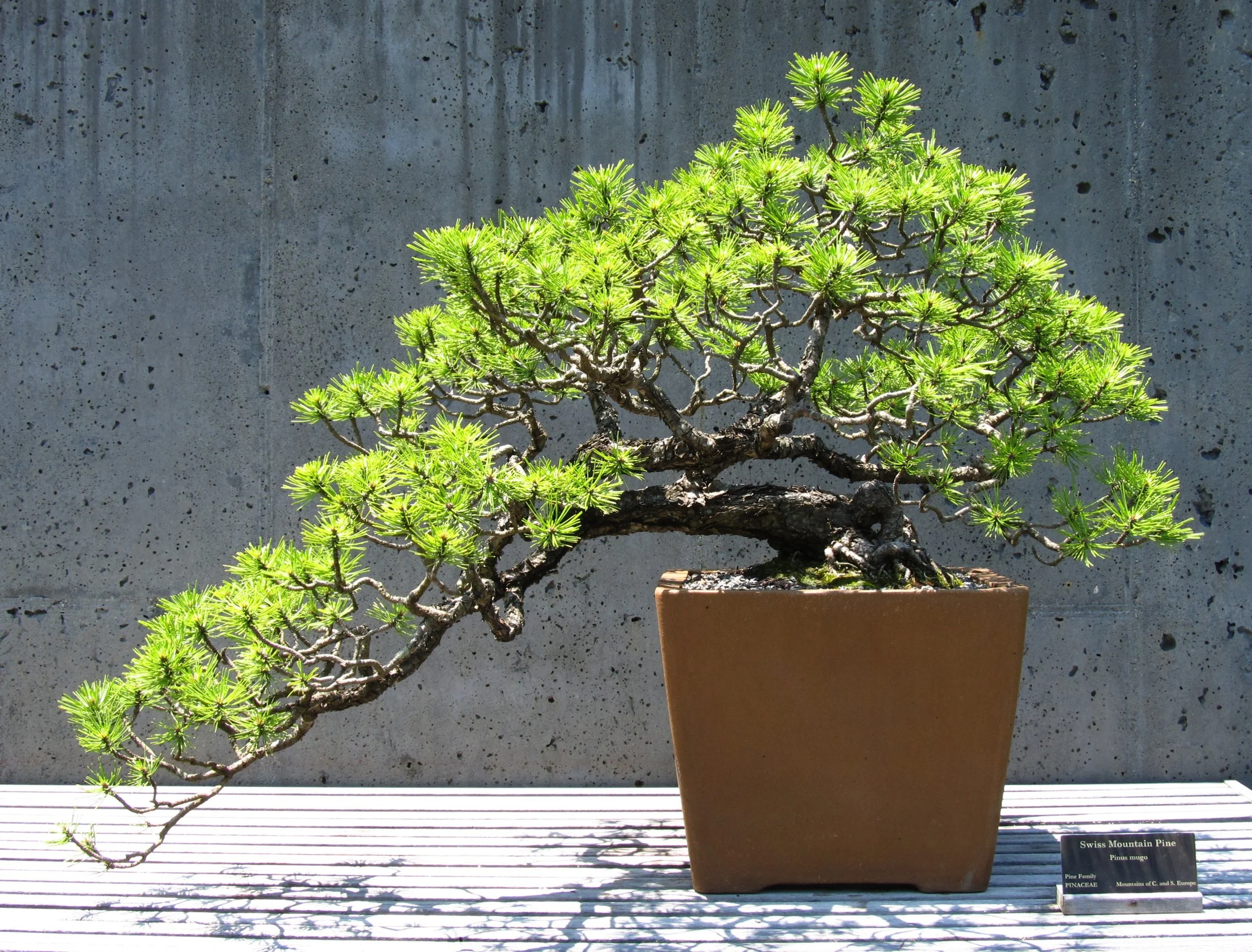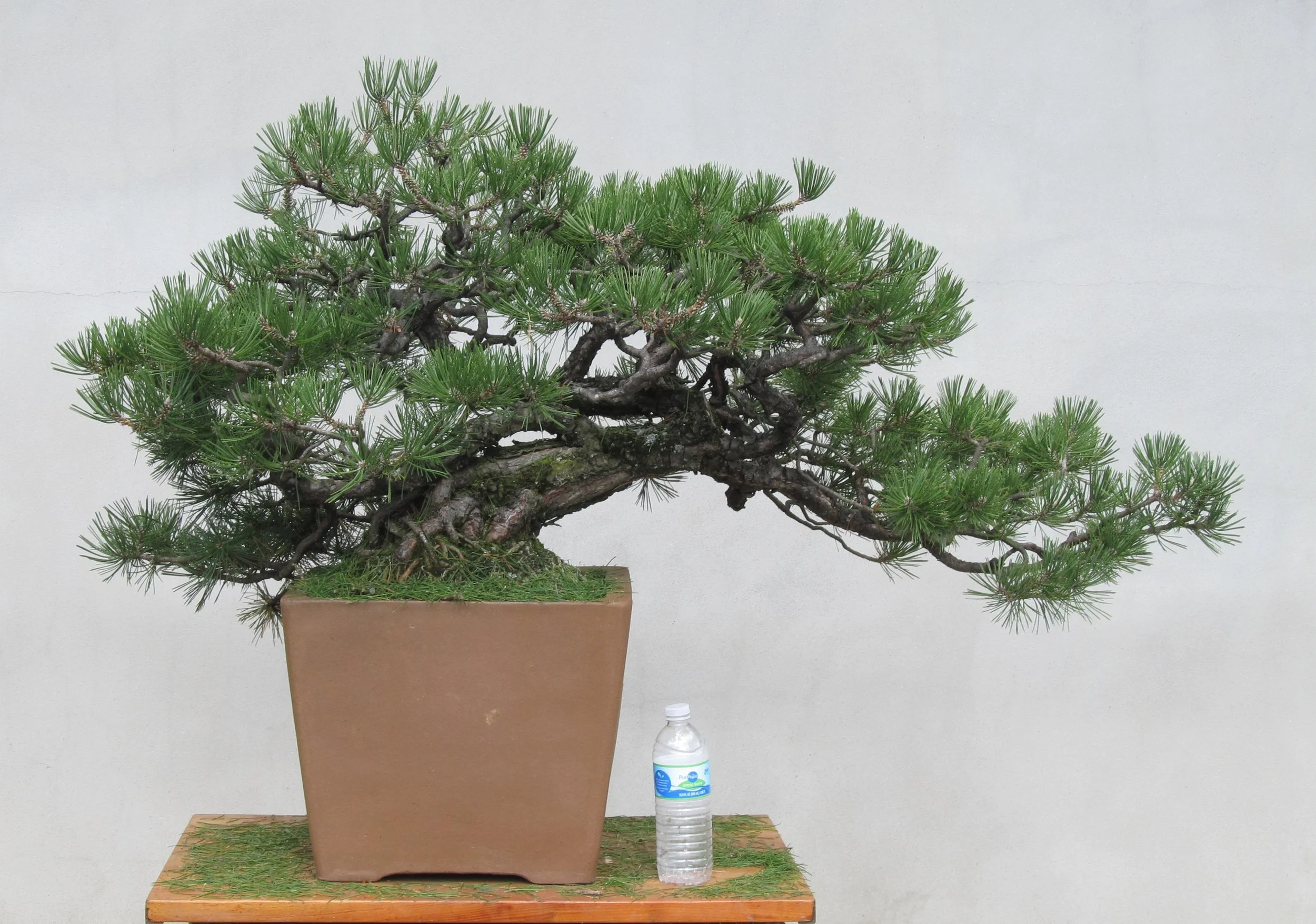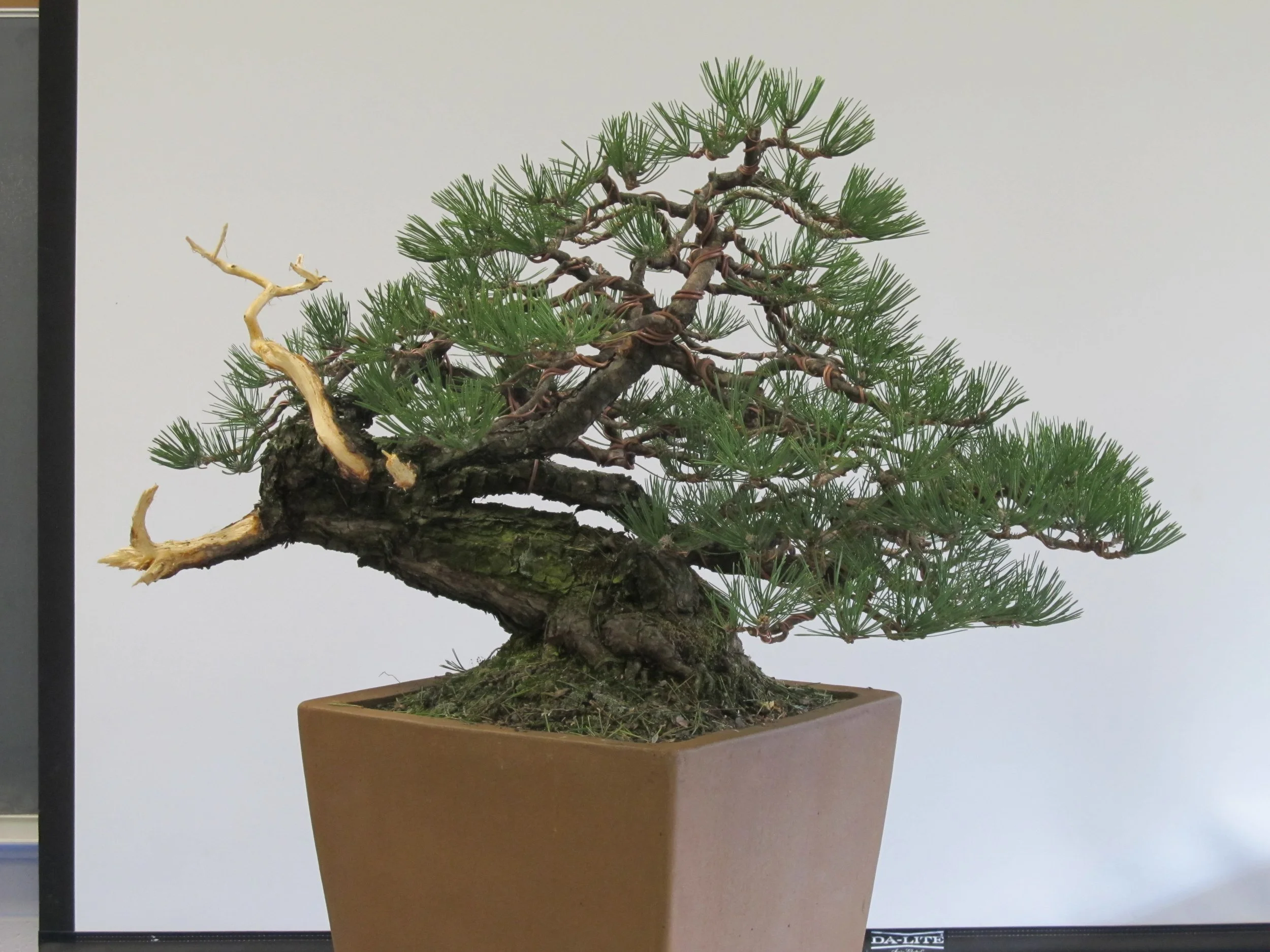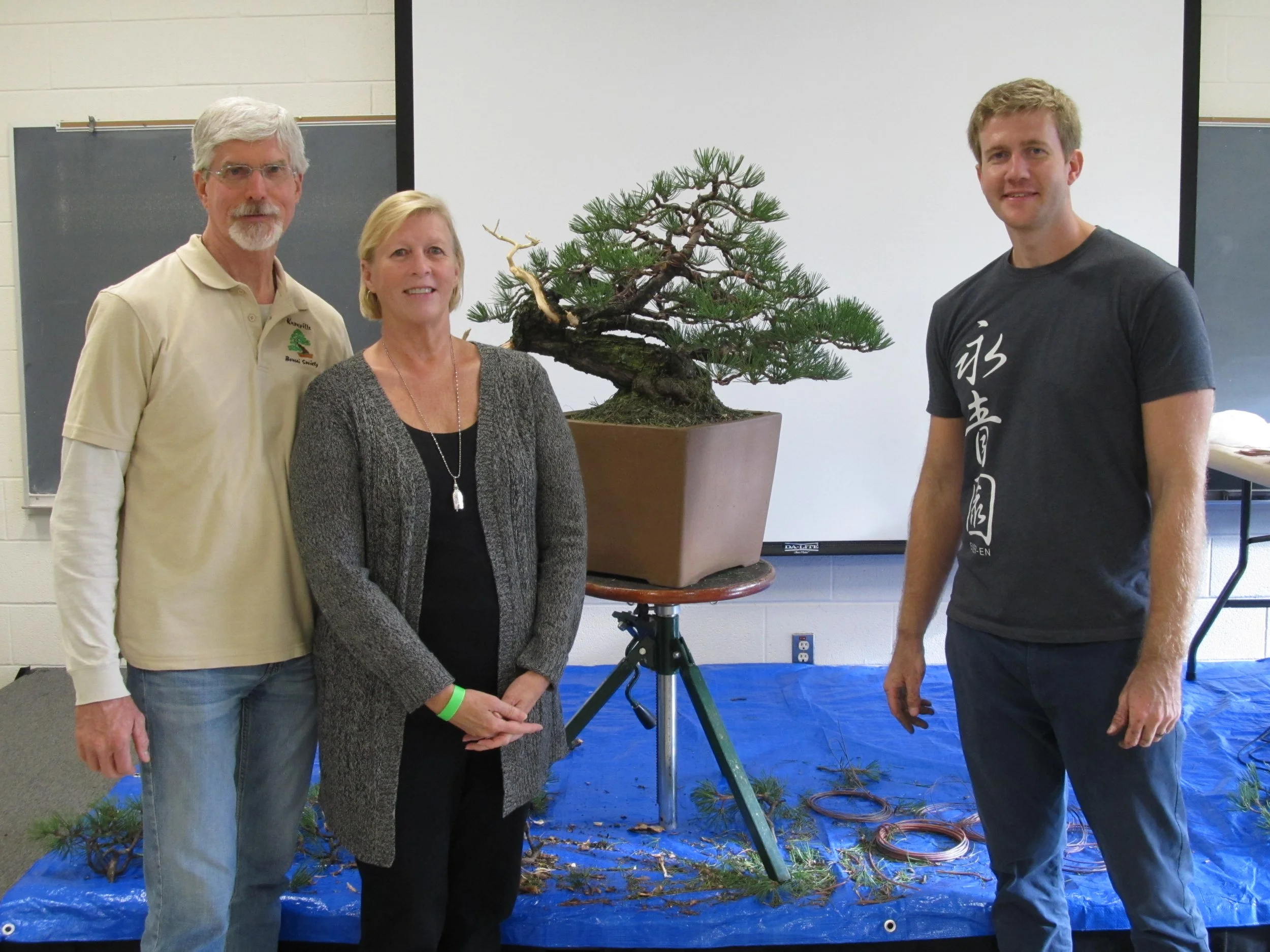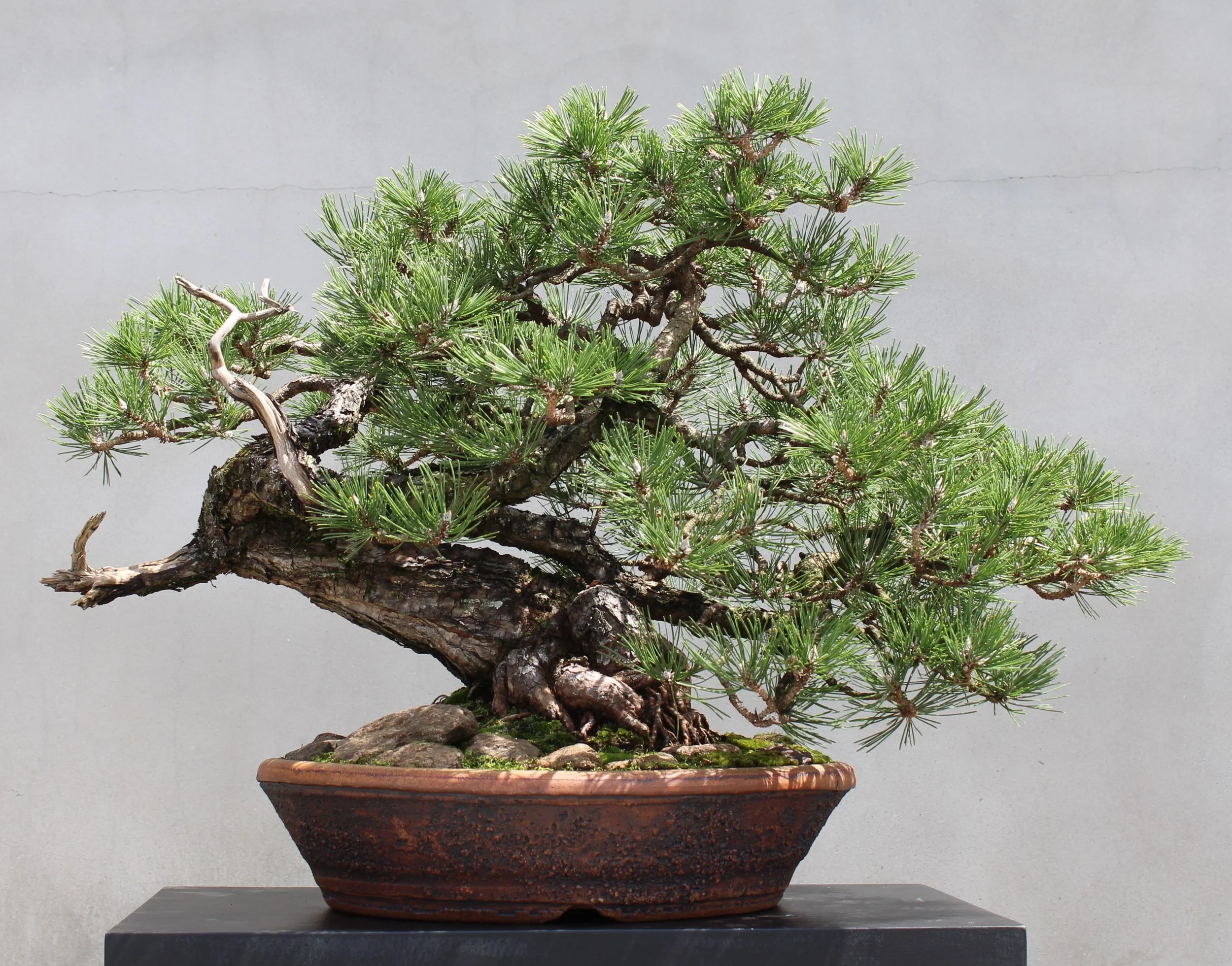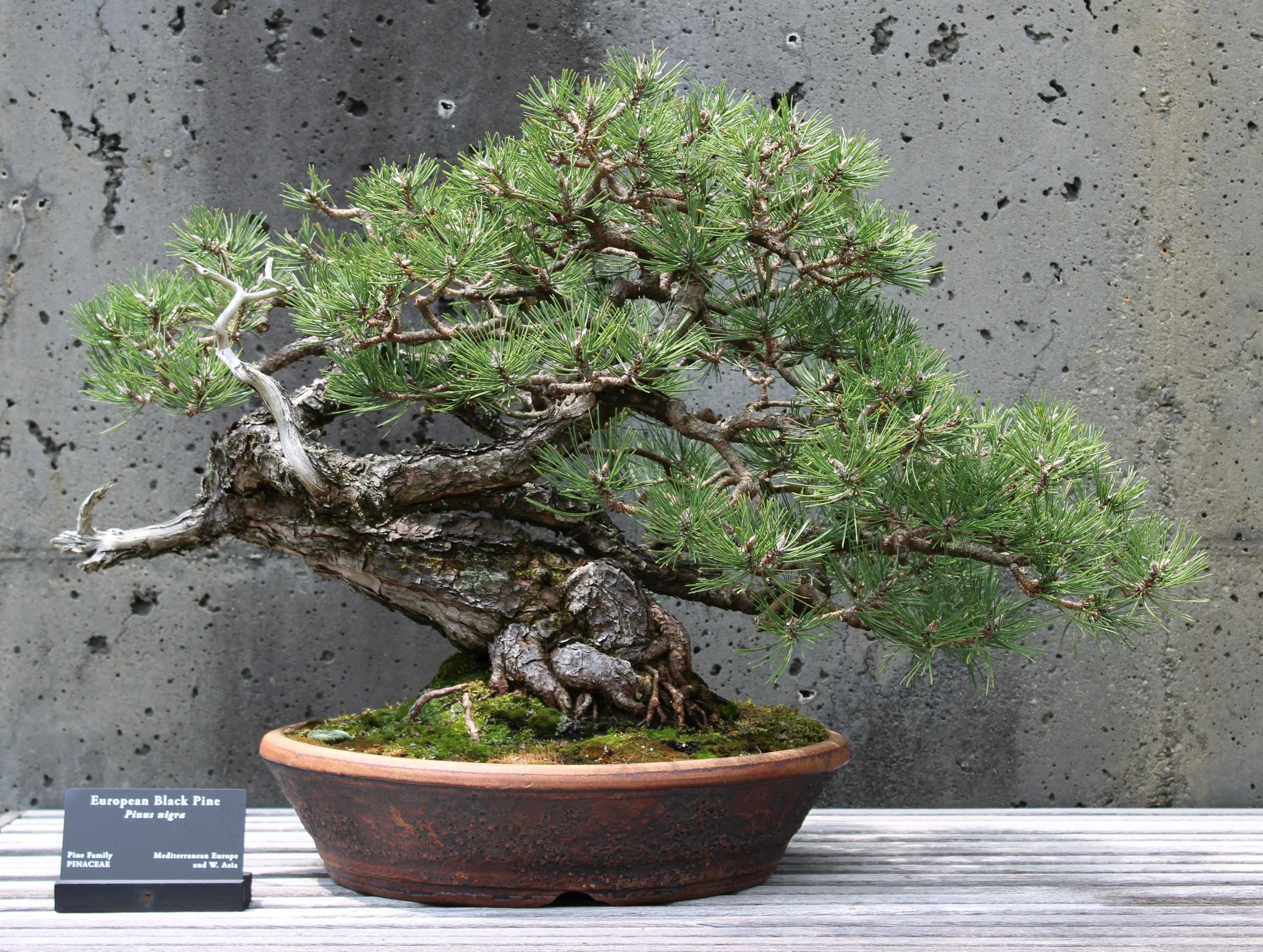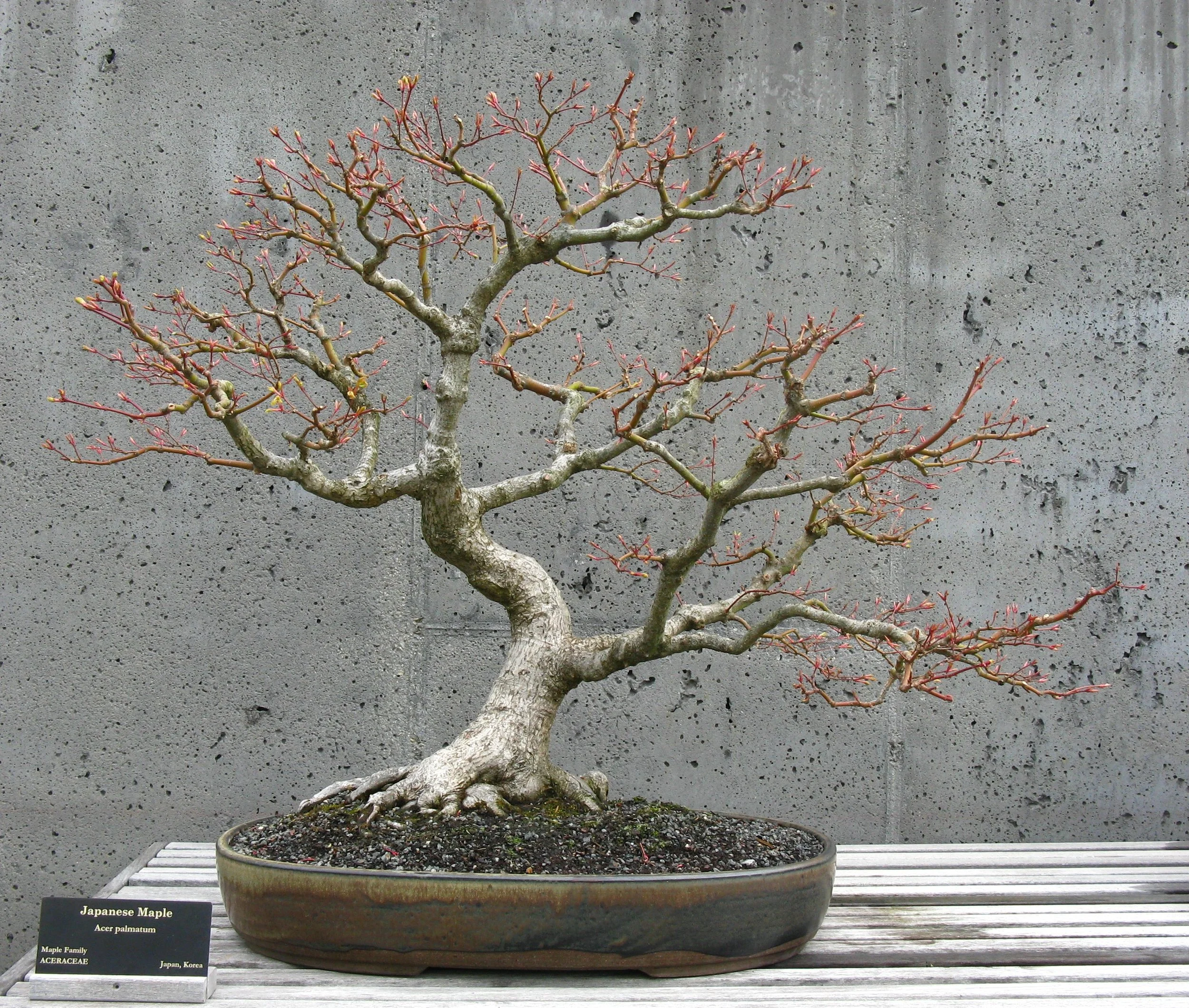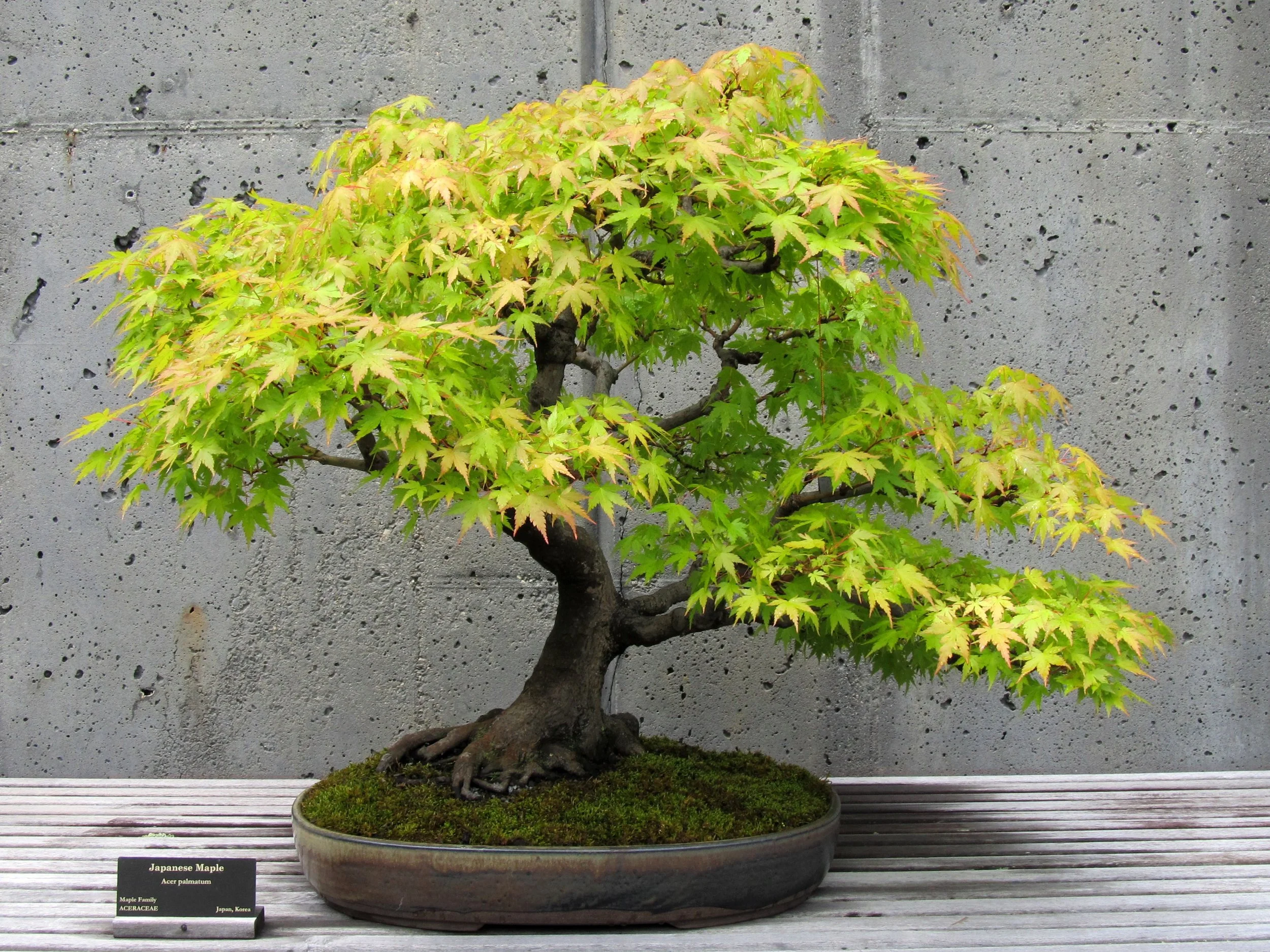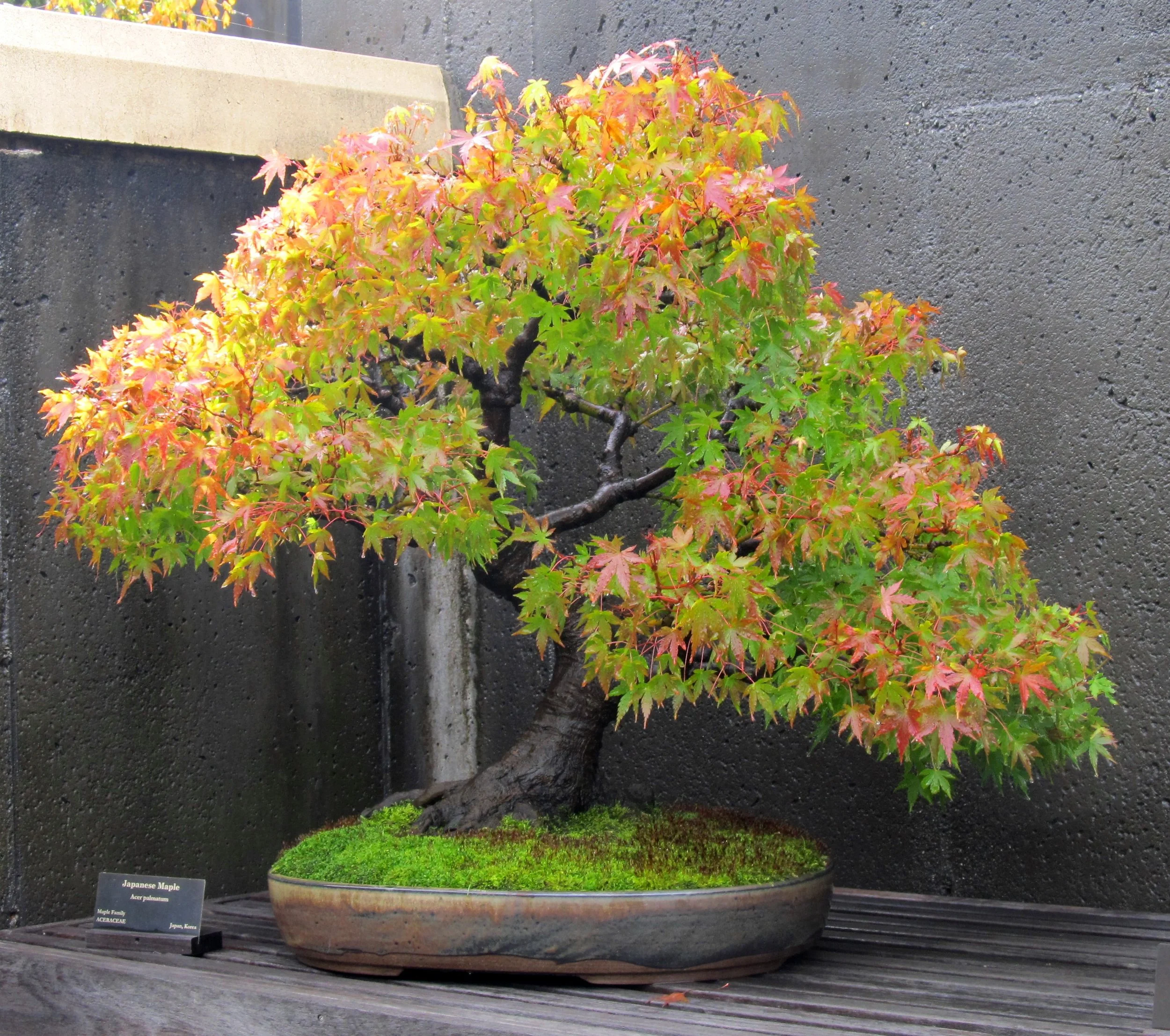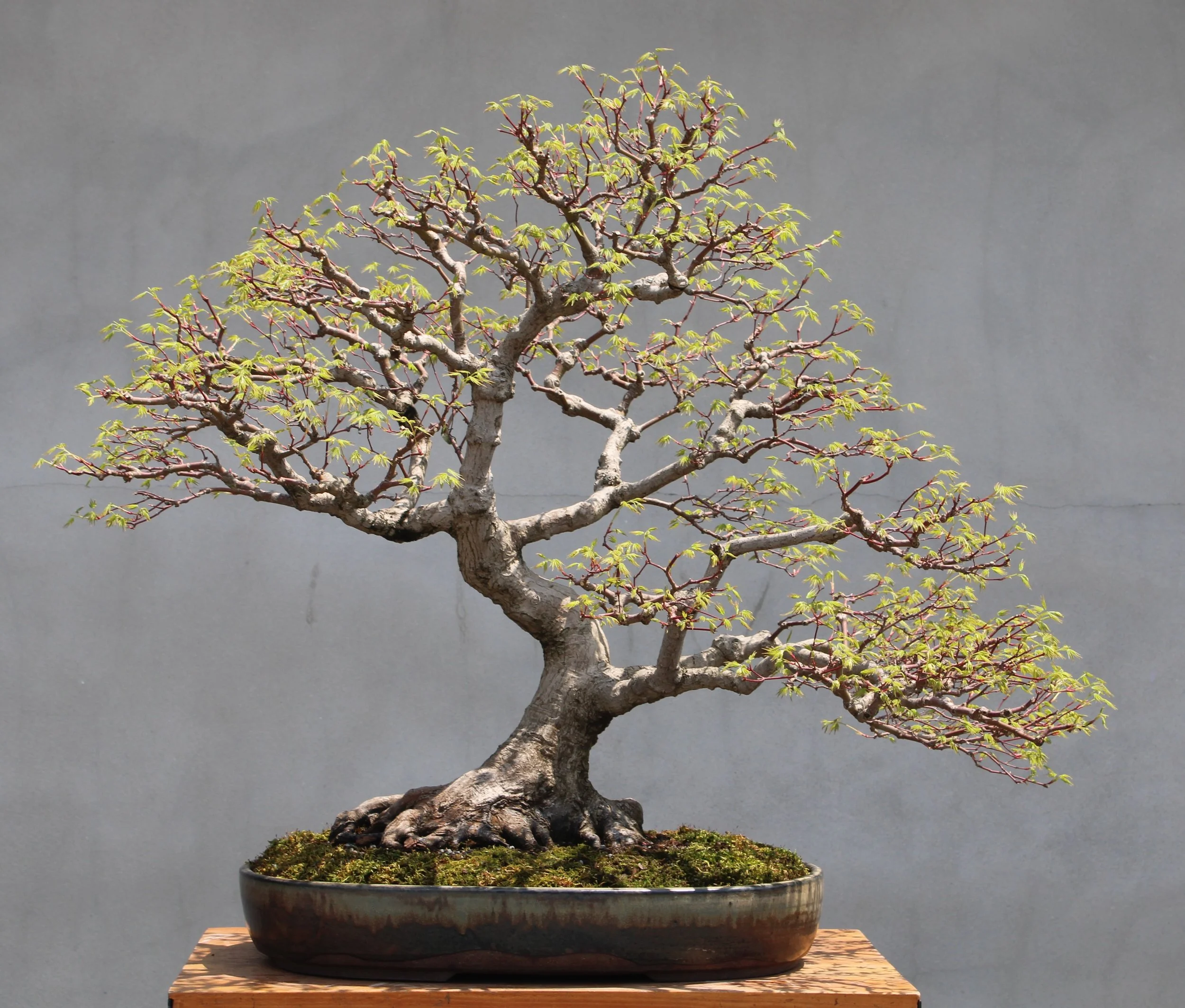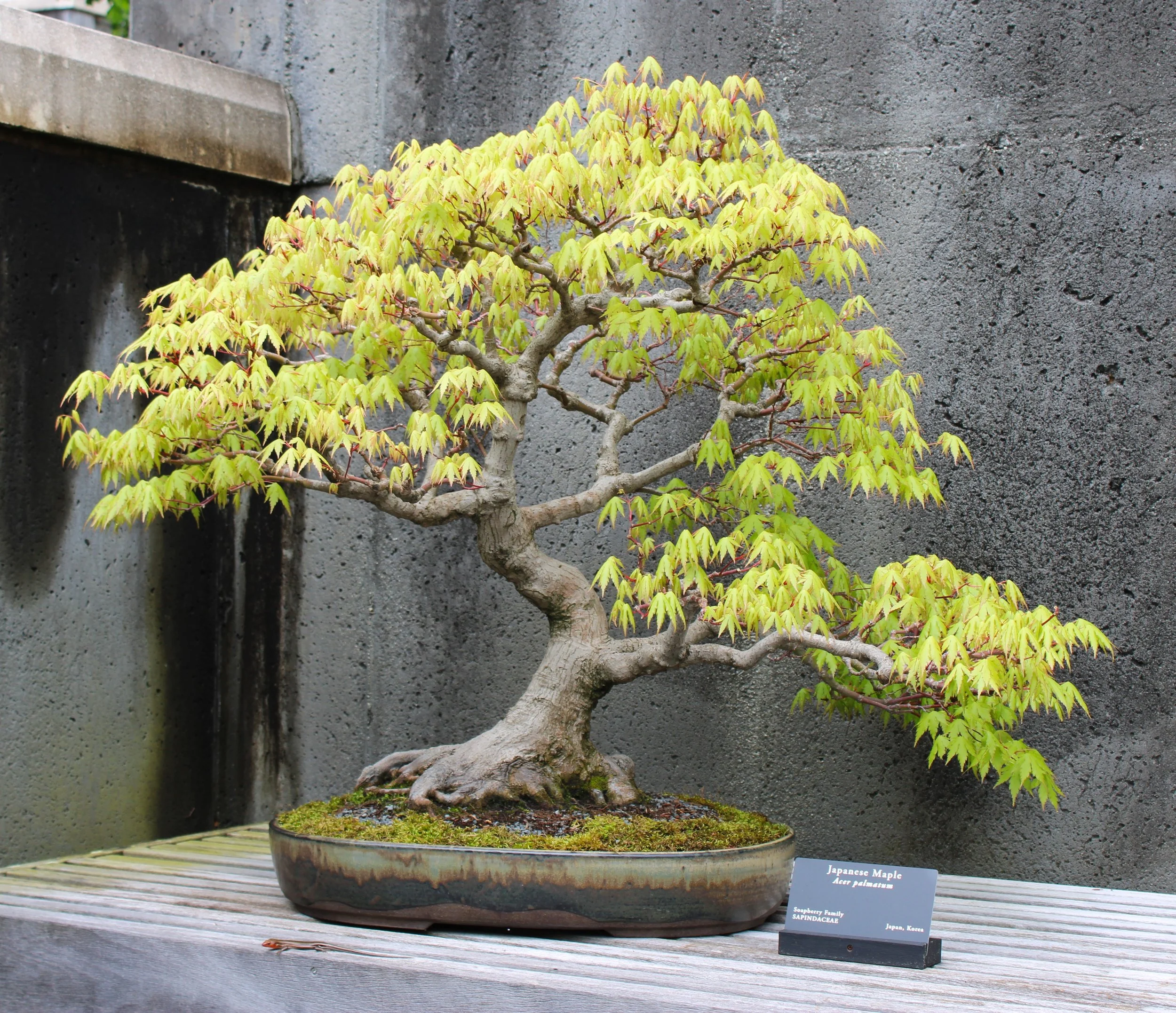A Couple of Good Ones From Kent
Kent Kise, Jr. radiated positive attitude. With his face illuminated by a genuinely beaming smile, he was quick with encouragement and would good-naturedly preach the power of possibility. When I read his obituary, after his death in 2015 at the age of ninety, I was impressed by his life's accomplishments and the range of his talents and interests. He was a mechanical engineer with a special interest in metallurgy, as well as an entrepreneur and inventor, author, sales and marketing executive, business advisor, teacher, planner, diplomat and community leader. Kent was a lot of other things, too, including an accomplished singer, an excellent wood-carver and an avid bonsai enthusiast. I think positive energy was how he powered such a long and productive life.
Kent was a longtime member of the Lancaster Bonsai Society in Pennsylvania, which is where I met him. I was going regularly to eastern Pennsylvania in the early 2000s to do programs for the Susquehanna and nearby Lancaster Bonsai Societies. At one such meeting I was approached by Roger Lehman, proprietor of Meco Bonsai and supporter of bonsai at The North Carolina Arboretum, who proposed I make a side trip with him to his friend Kent Kise’s house. Kent, not surprisingly, had been a mentor to the younger Roger in both bonsai and business. At the Kise residence I met Lois, Kent’s beloved wife, then spent time admiring several of Kent’s wood carvings. Having had some limited experience in wood carving earlier in my life, I had real interest in the fine sculptures Kent carved and asked him a lot of questions about his work. He promptly made a present of a book he had nearby, titled "How to Make a Wood Carving Into a Masterpiece." It was written by Kent Kise, Jr.
Kent Kise, Jr. (right) on a visit to the Arboretum, 2007.
After a while we went outside to the back of the house where Kent kept his bonsai collection. It was a good collection, fairly extensive but not unreasonably so. The little trees were a variety of styles and species, some larger a few smaller, all cleanly kept. Kent began talking about his desire to start reducing his bonsai holdings due to his advancing years. He asked if the Arboretum would be interested in having any of his trees. I gave the response I was in the habit of giving to the question of donations — that getting bonsai accepted into the Arboretum collection was not so easy, but we were always open to donations of bonsai that might be liquidated at auction to raise funds for the Arboretum's bonsai program. With perfect pleasantness, Kent directly addressed that suggestion by saying he wasn't interested in giving his bonsai to be auctioned. He would gladly donate some of his trees, but only if we would agree to keep them in the collection. Kent had apparently anticipated the Arboretum's position on the matter. He directed my attention to a group of seven or eight bonsai that were in one place together a little separate from all the rest. "I think these are the best bonsai I'm willing to part with right now," Kent said with a smile. "The Arboretum can have any or all of them, but only if they remain in the collection."
I sensed I had been maneuvered into a situation that had been carefully pre-arranged by Kent. I didn't mind it so much because he had made clear what was possible and what wasn’t, and he had done it so smoothly, with such good cheer and affability. I turned attention to the trees he was offering. They were all generally good, but I felt the Arboretum collection already featured most of the species represented and the trees we had were better. Two of Kent’s specimens stood out, however.
One was a large informal upright Japanese maple (Acer palmatum). Of all the tree species I thought we already had in sufficient number, Japanese maple probably topped the list. The one being offered by Kent was notable for its large size, apparent age and healthy vitality. This maple also had an intriguingly naturalistic character in design, different from most Japanese maple bonsai I had seen.
The other of Kent's bonsai that caught my eye was a large pine in a recumbent form. This tree, too, looked old and was in strong health. Kent was not completely certain what type of pine it was but thought it might be a Swiss mountain pine (Pinus mugo). It didn’t look like one to me, although I could not say what else it might be. What really mattered was the apparent age and degree of development this specimen possessed, the product of decades of careful tending. Exactly what kind of pine it happened to be could always be figured out at a later time.
Organized and efficient, Kent had steered me to his purpose and sent me home that very day with several of his bonsai. The Japanese maple and the pine — which turned out to be a European black pine (Pinus nigra) — I first saw that day in Kent's backyard have lived at the Arboretum ever since. Both trees have often been on display in the Bonsai Exhibition Garden, as indeed they are now, at the time of this writing. What follows is a pictorial account of their time under the Arboretum's care.
European Black Pine
It was German bonsai artist Walter Pall who first identified this pine for us. He was visiting the Arboretum and I made a point of showing him the tree and asking if he thought it was a mugo. He examined the tree and quickly announced it wasn’t, saying instead that it was an Austrian pine, which is another name for Pinus nigra. Walter said he was familiar with both mugo and Austrian pine as native trees in the mountains of Europe and he had no doubt about it. At the Arboretum we identify this specimen as being a European black pine because Pinus nigra has a much greater distribution than the name “Austrian” suggests. Walter grew up in Austria so I suppose he’s allowed his preference.
The first available photograph of this bonsai was made in October of 2008, and shows the European black pine as it looked upon its arrival to the Arboretum:
October 2008
This recumbent pine has two trunk lines — one descending and one ascending. That is often the case with this form of bonsai, but the configuration in this instance is unconventional. The ascending line comes off the descending one a good distance from the base of the plant, then doubles back toward the base before rising to form the crown of the tree. It was a somewhat ungainly structure but hidden well enough behind evergreen foliage to not draw so much attention to itself.
No effort was made to restyle the pine. Instead, it was trimmed and transplanted into a larger container made by Jim Barret of California. The image below shows the European black pine on display in the bonsai garden in 2012:
May 2012
This pine proved to be a strong grower, but the strength was not equally distributed in all parts of the tree. The descending line was weaker overall than the ascending line, with growth at the lowest point of the descending line being noticeably puny. Such inequality of strength in the various parts is typical of recumbent bonsai. It is the responsibility of the grower to work against that tendency by means of pruning, but the job is never-ending because the ascending line has the superior position. The tree is determined to grow upward toward the sun.
After ten years of growing the pine in essentially the same form as when we received it, it seemed some sort of change was in order. Bjorn Bjorholm was scheduled to be the guest artist at the 2018 Carolina Bonsai Expo and I decided to give him the European black pine to use as a demonstration tree. Bjorn is one of the top bonsai professionals in the world. I sent him the following two images of the pine a month before the show so he could get a sense of what he’d be working with:
September 2018
I let Bjorn know he had complete license to do whatever he thought best with the European black pine. His design decision eliminated the problem of weakness in the descending line by removing that part of the tree. It was an excellent demonstration, resulting in a more compact and dynamic shape for the bonsai:
October 2018
It happened that Bjorn’s mom and dad came in from Knoxville, Tennessee, to attend their son’s program. They were all kind enough to pose for a family portrait afterward:
Left to right: Tom, Katherine and Bjorn Bjorholm
The new styling called for a different container. A round pot by Sara Rayner was chosen, as seen in this image from three years later:
August 2021
The European black pine as it currently looks:
August 2024
Japanese Maple
Over the many years we have received bonsai donations at the Arboretum, we have probably had more Japanese maples offered than any other type of tree. They are the epitome of a classic deciduous bonsai species. There is much to recommend Japanese maple as both a tree and a bonsai subject, but there was never any attraction in having them be a special focus of our collection. This particular Japanese maple stood out from all the others that came our way. It is old, large and well developed, but more than that, it has individual character. The styling is loose and unconventional, giving this specimen a sense of wild nature. Here is what it looked like when it first arrived at the Arboretum:
October 2008
The maple was repotted before the 2009 growing season. It was planted back into the same Sara Rayner container, but adjustments were made to the tree’s posture and placement. The maple was shifted to the left side of the pot in accordance with its left-to-right movement, while the angle of the trunk was shifted in a more rightward direction. The entire tree was also rotated clockwise in the pot for a better presentation of the primary branch arrangement:
May 2009
Spring is a wonderful time for Japanese maples, as first the buds swell and then new leaves emerge in a bright, exhilarating burst of color:
May 2011
May 2011
The following sequence of images gives a sense of what the naked structure of this specimen looks like “in the round” (click on any image for full view):
Although I’ve always thought well of this maple, a certain aspect of it has always felt clunky. The problem is found in the sickle-like shape of the trunk and particularly the way several primary branches emerge from it. The ungainly arrangement is highlighted in the cropping of this picture:
I’ve tried numerous ways to mitigate the situation but without much success. It’s tough to deal with problems involving an established old trunk and primary branch arrangement!
How big a deal is it? When the tree is in leaf the trunk line and branch structure is mostly unseen:
2016
2017
2019
A crown full of pretty leaves can hide a multitude of structural sins, but for half the year a deciduous tree must stand naked. The most accomplished deciduous bonsai look their best when bare.
The gallery below of images made in 2021 shows the seasonal beauty of Japanese maple bonsai (click any image for full view):
May 2022
August 2023
Just as there is no perfect person, there is no perfect tree. If I were to try and fix what I find bothersome about this bonsai the most likely outcome would be something less appealing than what currently exists. Acceptance seems to be the way to go. I can’t think of a better way to honor Kent Kise and his positive attitude than by focusing on everything that’s good and right about the Japanese maple he gave us.
May 2024

